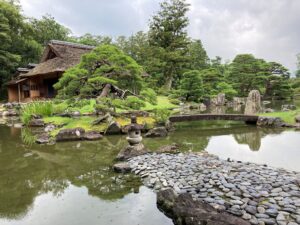Who built Sanjusangen-do Hall and what does Sanjyusan mean?
The Sanjyusangen-do Hall (literally 33 intervals), officially Rengeoin Temple, resides in the heart of Kyoto, Constructed in 1164 by the retired Emperor Go-Shirakawa (1127~1192, 後白河天皇), or Go-Shirakawa-In with the financial support of Samurai, Taira Kiyomori, to pray for the safety and prosperity of the nation and people. This remarkable 121-meter-long wooden structure features 33 spaced intervals between pillars. It houses 1,001 life-sized statues of the thousand-armed Kannon Bodhisattva, the goddess of mercy. The number 33 has a special meaning in Buddhism, representing Kannon’s 33 incarnations, offering comfort and compassion to all living things through a thousand eyes. Thus, the number 33 truly reflects the earnest wish of Emperor Go-Shirakawa.
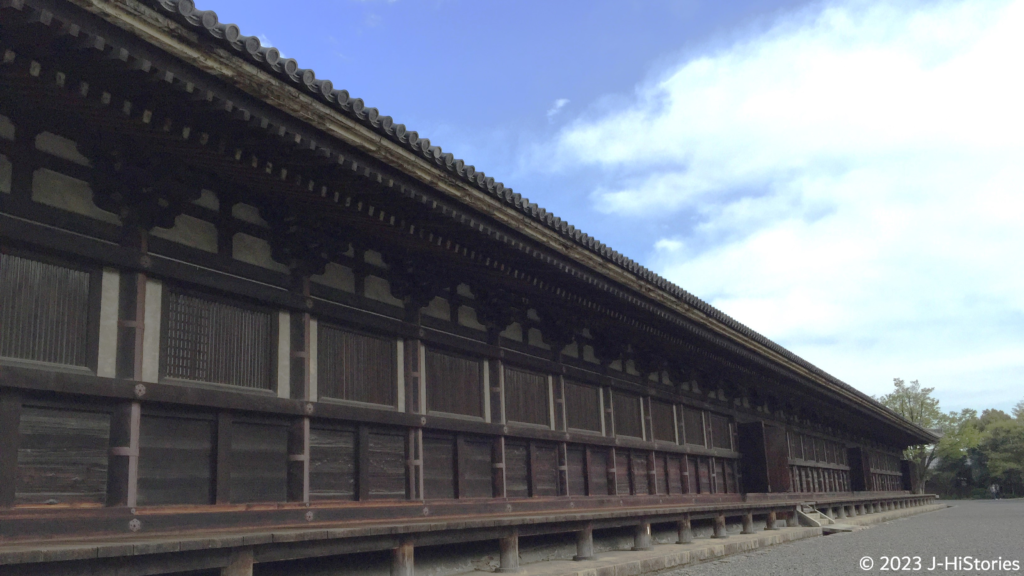
Emperor Go-Shirakawa’s life was full of tumultuous events
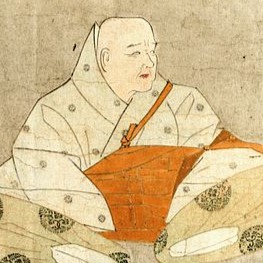
@Wikimedia_Public Domain
During the late Heian period (794-1185) when the samurai was asserting its ascendancy, Emperor Go-Shirakawa unexpectedly ascended the throne at the age of 28, assuming the role of a relay successor to his own son. Born as the fourth prince, the imperial crown seemed to be improbable. Therefore, he enjoyed a carefree life such as devoting himself to Imayo (popular songs), actively engaging with the ordinary people by visiting towns outside the imperial palace, and listening to their voices. His freewheeling lifestyle continued after being crowned for over three decades until his death at the age of 66, lasting through the reign of 5 emperors.
A hotchpotch Go-Shirakawa’s life but he was quite serious
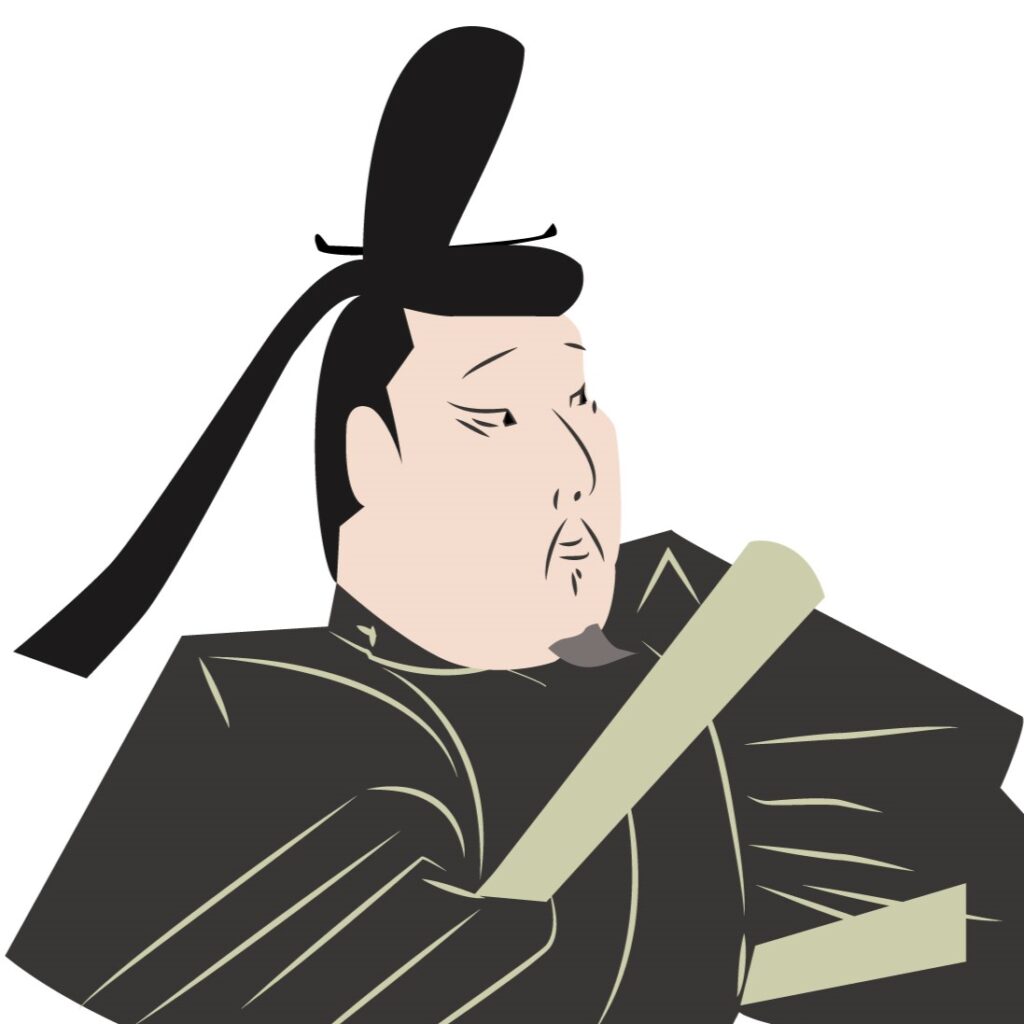
Emperor Go-Shirakawa was embroiled in complex power struggles involving the Imperial family, influential Sekkan families (*), and the emerging samurai. Unbelievably, he faced the suspension of his Insei (cloistered rule) on two occasions, forced into confinement and house arrest. During his initial ordeal, a rising samurai, Taira Kiyomori, extended a helping hand, facilitating Go-Shirakawa-In’s escape. However, the alliance between these formidable figures soon soured and fell into a fierce political rivalry. In response, a group of court nobles of the Fujiwara clan, who allied with Go-Shirakawa-In, plotted an uprising against Kiyomori. Tragically, their scheme was uncovered, inciting the wrath of Kiyomori be beheaded them, and confined Go-Shirakawa-In.
Go-Shirakawa-In’s intelligent ability to read Kiyomori’s wane
In 1180, Kiyomori made history as Japan’s first samurai to wield the highest level of political power based on (a) his strong military and police power, (b) an enormous amount of money gained through trade with the Sung Dynasty, and (c) his economic and political power through his guardianship of the huge Shoen estates. Notably, he held sway over two emperors: Emperor Takakura(his nephew) and Emperor Antoku (his grandson). These two emperors were also Go-Shirakawa-In’s prince and grandson. Yet, Go-Shirakawa-In sensed Kiyomori’s waning influence through insights gleaned from ordinary people during Imayo parties.
Go-Shirakawa-In’s Joyful Ode: A Moment of Liberation
After Kiyomori’s demise at the age of 64, Go-Shirakawa-In sang a blessing called “Imayo” at the top of his lungs during Kiyomori’s funeral ceremony. This Imayo was a widely appreciated song used to express celebration and joy. It appears that Go-Shirakwa-In felt a sense of liberation at last. He recited:
”Delightful water, gush of a waterfall, the waterfall never ceases even in the harshest drought.” (Japanese: “嬉しや水、鳴るは滝の水、日は照るとも絶えずうたへ” )
Following this event, his entire family, including his wife and his grandson, Emperor Antoku, met a tragic fate during the Battle of Dannoura at the hands of Minamoto Yoritomo and his brother Minamoto Yoshitsune. It's worth noting that Kiyomori had previously taken the life of both Yoritomo and Yoshitsune's father.
Next, Go-Shirakawa-In's wheeler-dealing with Minamoto Yoritomo and the Birth of the Kamakura Shogunate
In the aftermath of the Taira family's downfall, peace and tranquility were not realized for Go-Shirakawa-In. This period witnessed internal strife within the Minamoto clan, pitting brothers Yoritomo and Yoshitsune against each other. Seeking to restrain Yoritomo, who was rapidly gaining power, Emperor Go-Shirakawa-In turned to Yoshitsune, renowned for his military prowess in the Taira clan's defeat. He issued a decree to expel Yoritomo to Yoshitsune. Infuriated, Yoritomo exerted pressure on Go-Shirakawa-In. Fearing to be involved in the feud between the brothers, Go-Shirakawa-In abruptly issued a decree to expel Yoshitsune to Yoritomo. Weakened in comparison, Yoshitsune succumbed to Yoritomo in Hiraizumi, Tohoku. In 1190, Go-Shirakawa-In met Yoritomo for the first time, leading the restoration of peace between both factions. During this period, Yoritomo established the Kamakura shogunate in Kamakura, making the inception of the first samurai government in Japanese history.
Imayo Reflections: Go-Shirakawa-In's Life and Political Play
In the renowned Ryojin Hisho, a collection of Imayo compiled by Go-Shirakawa-In, there exists a profound verse that resonates with the essence of his life:
“Are children born to play or to be played with? When I hear children playing, even my body trembles easily.” (Japanese: 遊びをせんとや生まれけむ 戯れせんとや生まれけん 遊ぶ子供の声聞けば わが身さえこそ動がるれ)
This Imayo appears to encapsulate the very spirit of Go-Shirakawa-In’s life. One interpretation of this verse is to live one’s life with an unwavering passion and intensity, much like a child engrossed in play, oblivious to the passage of time. Go-Shirakawa-In, having experienced the tumultuous and unyielding nature of life, found passion in the world of Imayo, much akin to a child immersed in their games. His political struggles against the emerging samurai, Kiyomori and Yoritomo, could be linked to a game, “asobi”. However, this contributed to making samurai gain power and marked a pivotal shift in Japanese political dynamics.
Kannon's Blessing: The Key to Go-Shirakawa-In's 30-Year Prestige at the Imperial Court
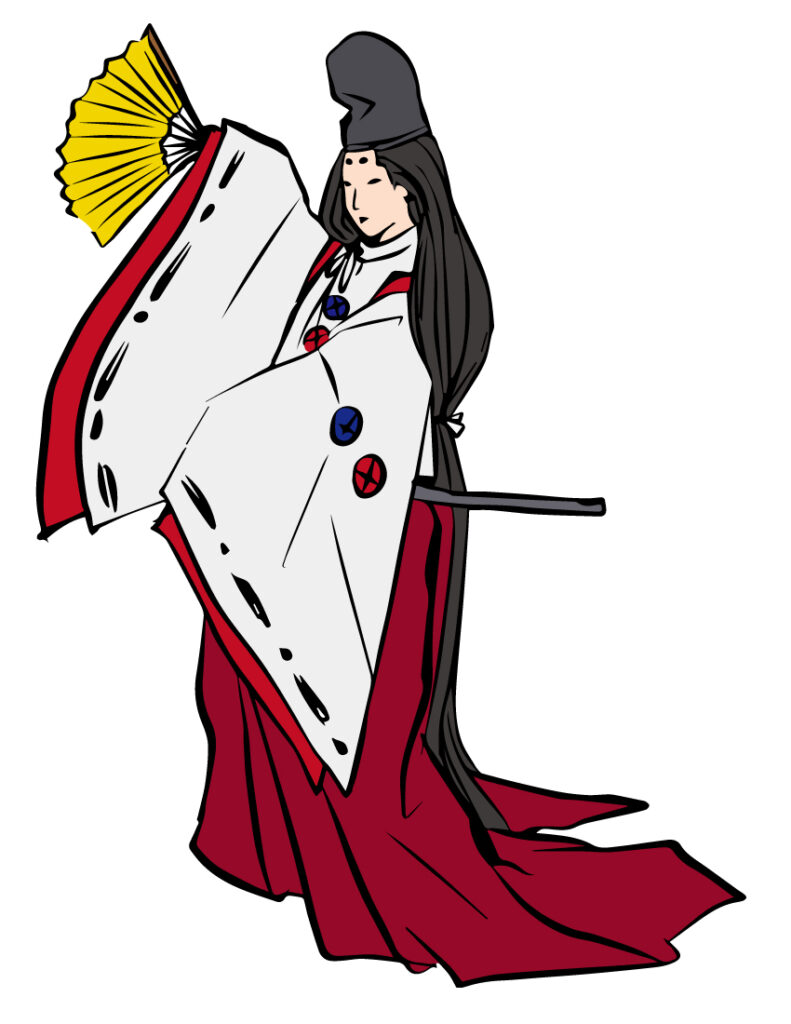
How could Go-Shirakawa-In uphold the prestige of the Imperial Court? Several factors contributed to this:
- Go-Shirakawa-In’s remarkable longevity, living up to the age of 66 during a time when such long life spans were uncommon.
- Go-Shirakawa-In built a substantial information network among ordinary citizens by mingling with them at Imayo parties and visiting temples and shrines, something not easily accessible within the Imperial Palace. This network gave him the edge to foresee national trends and act swiftly with insight.
- Go-Shirakawa-In had a distinctive personality like that of a freewheeling child, and his political wisdom was formed through the unexpected opportunity of ascending to the throne.
Throughout his life, Go-Shirakawa-In appeared to be blessed by Kannon. Upon his passing, he was laid to rest beside his wife Shigeko at his former residence, now known as Hojuji Temple, located not far from Sanjusangendo. We cordially invite you to visit Sanjusangendo to experience the same blessings that Go-Shirakawa-In sought through his prayers to Kannon.
Emperor Go-Shirakawa Timeline
| Go-Shirakawa | Kiyomori | Yoritomo/Yoshitsune | Period | ||
| 1118 | Taira Kiyomori was born | - | Age=1 | Heian | |
| 1127 | Goshirakawa was born | Age=1 | 9 | ||
| 1147 | Yoritomo was born | 20 | 29 | Age=1 | |
| 1052 | "Age of the Final Dharma" was believed to begin in 1052 | 25 | |||
| 1155 | Goshirakwa ascended the throne | 29 | 38 | ||
| 1156 | Hogen war, Kiyomori supported Emperor Go-Shirakawa | 29 | 39 | 10 | |
| 1158 | Go-Shirakawa started his Insei (cloister government) | 31 | |||
| 1159 | Yositsune was born | 32 | *Age=1 | ||
| 1159 | Heiji war, Kiyomori defeated Yoritomo's father | 32 | 42 | 13 | |
| 1160 | Yoritomo was exiled to Izu | 33 | 43 | 14 | |
| 1161 | Prince Takakura was born between Goshirakawa and Shigeko | 34 | |||
| 1162 | Goshirakawa was forced to stop Insei | 35 | |||
| 1164 | Sanjyusangendo was built | 37 | |||
| 1167 | Taira Kiyomori became Grand Minister of State | 40 | 50 | 21 | |
| 1168 | Emperor Takakura ascended to the throne | 41 | |||
| 1177 | Shishigatani incident. | 50 | 60 | ||
| 1178 | Prince Kotohito of Emperor Takakura and Tokuko, Kiyomori's was born | 51 | |||
| 1179 | Gosirakawa's Insei was suspended | 53 | |||
| 1180 | Emperor Antoku ascended to the throne | 54 | |||
| 1180 | Taira Kiyomori forced to move the palace from Kyoto to Fukuhara | 54 | 63 | ||
| 1180 | Kiyomori attacked Kofuku-ji and Enryoaku-ji temples | 54 | 63 | ||
| 1180 | Kiyomori's rival, Yoritomo raised an army to attack Kiyomori & his family | 54 | 63 | 34/*22 | |
| 1181 | Goshirakawa's Insei restarted due to the retired Emeperor Takakura's death | 55 | 64 | ||
| 1181 | Kiyomori died of deceases | 55 | 64 | 35 | |
| 1183 | Goshirakawa gave Yoshinaka his imperial order to hunt down Kiyomori’s remaining family | 57 | |||
| 1183 | Kiyomori's family escaped from Kyoto | 57 | |||
| 1183 | Goshirakawa got angry about Yoshinaka warrior's outrage in Kyoto, but conversely he was trapped. | 57 | |||
| 1183 | Yoritomo's borther Yoshitsune released Goshirakawa | 57 | |||
| 1183 | Goshirakawa gave Yoshitsune an Imperial order to expel Taira Kiyomori's family | 57 | |||
| 1185 | Kiyomori's family fell at the Dannoura War | 59 | 39/*27 | ||
| 1185 | Goshirakawa gave Yoshitsune an Imperial order to hunt down Yoritomo | 59 | |||
| 1185 | Goshirakawa gave Yoshitsune an Imperial order to hunt down Yoshitsune | 59 | |||
| 1185 | Goshirakawa appointed Yoritomo as the military and police power and approved as the ruler of eastern Japan | 59 | |||
| 1185 | Minamoto Yoritomo established Kamakura Shogunate | 66 | 46 | Kamakura | |
| 1189 | Yoshitsune died | 63 | 43/*31 | ||
| 1192 | Goshirakawa passed away | 66 |
Recommendations to visit
- Access: 10 minutes from Kyoto Station. Take Bus # 100, #206, or #208 and get off at "Sanjyusangendo-mae (三十三間堂前)" bus stop.

